Triassic dinosaur list, with pictures and facts.
On this page you’ll find a list of some of the best-known dinosaurs of the Triassic Period, together with pictures and facts on each dinosaur.
- You can find out more about the Triassic Period here: Triassic Period Facts
- Find out about the different types of dinosaur (including theropods, saurischians, etc.) here: Types of Dinosaur
Discover More Dinosaurs!
Triassic Dinosaurs: Introduction
(Scroll down to see the dinosaurs!)
The Triassic Period was the first period of the Mesozoic Era. It was during the Triassic Period that the first dinosaurs began to appear. They were mainly small, nimble animals that walked on two legs. There was little difference between them and their reptilian ancestors.
During the Triassic Period, the dinosaurs were still to become the dominant land animals. Instead, it was a group of crocodile-like reptiles known as pseudosuchians that were the top predators.
Both the pseudosuchians and the dinosaurs were members of a group of reptiles known as archosaurs. It wouldn’t be until the Jurassic Period – the period that followed the Triassic Period – that the dinosaurs would rise to dominance over their archosaurian cousins.
Let’s meet some Triassic dinosaurs…
List of Dinosaurs of the Triassic Period
Alwalkeria
- Type of dinosaur: Saurischian, early theropod
- Existed: 228 Ma
- Where found: India
- Estimated length: 50 cm (1.6 ft.)
Alwalkeria was a small saurischian dinosaur. It was named after the English paleontologist Alick Walker. Alwalkeria was omnivorous and bipedal (i.e. it walked on two legs).
All that we know about Alwalkeria comes from a single, incomplete skeleton.
Asylosaurus
- Type of dinosaur: Saurischian, early theropod
- Existed: lived during the Rhaetian age (somewhere between 208.5 and 201.3 Ma)
- Where found: Bristol, England
- Estimated length: 2 m (6 ft. 7 in)
Asylosaurus was an early sauropod. All we know of this dinosaur comes from a partial skeleton discovered in Bristol, England, in the 19th century.
Camposaurus
- Type of dinosaur: Theropod
- Existed: 220 Ma
- Where found: Bluewater Creek Formation, Arizona, USA
- Estimated length: unknown
Camposaurus was a small theropod dinosaur that lived during the Norian age of the Late Triassic period. From the partial lower leg bones found in Arizona, USA (the only known remains of this dinosaur), we can tell that it was a small meat-eater.
Chindesaurus
- Type of dinosaur: Saurischian
- Existed: 235-210 Ma
- Where found: USA
- Estimated length: 2 – 2.3 m (6.6 – 7.5 ft.)
Chindesaurus was an early saurischian dinosaur. It lived in what is now the United States.
Only six specimens of this genus have been discovered. The first of these was found by Bryan Small in 1984 at the Chinle Formation, Apache County, Arizona. Other specimens have been found in New Mexico and Texas.
Chindesaurus is related to the herrerasaurus (see below), and is in the same family, Herrerasauridae.
Coelophysis
- Type of dinosaur: Theropod
- Existed: 225-190 Ma
- Where found: southwestern United States, southern Africa
- Estimated length: 3 m (9.8 ft.)
Coelophysis was an early theropod dinosaur. It walked on two legs, and was fast and agile.
Coelophysis had sharp, curved teeth, and grasping claws. It was carnivorous; one specimen was discovered with the remains of a small crocodile inside its rib cage.
Large numbers of coelophysis have been discovered together. This suggests that it was a pack animal, perhaps working together in order to bring down larger prey.
Coelophysis is the earliest-known dinosaur to have a furcula bone. In birds (which are now known to have descended from theropod dinosaurs) the furcular is also known as the wishbone, and is part of the flight mechanism.
Coloradisaurus
(No image available)
- Type of dinosaur: Sauropod
- Existed: Late Triassic, 227-210 Mya
- Where found: Los Colorados Formation, Argentina
- Estimated length: 4m (13.1 ft.)
Coloradisaurus was an early sauropod. With a long neck and tail, and walking on four thick legs, it was like a miniature version of later sauropods such as Diplodocus, which would grow to huge sizes.
Coloradisaurus was discovered in 1978 by Argentine paleontologist Jose F. Bonaparte. The discovery was made at the Los Colorados Formation in Argentina.
Daemonosaurus
- Type of dinosaur: Theropod
- Existed: Late Triassic, 208 to 201 Mya
- Where found: Ghost Ranch, Chinle Formation, New Mexico
- Estimated length: 1.5-2.2 m (5-7ft.)
Daemonosaurus was a relatively small theropod of the Rhaetian age of the Late Triassic. This unusual-looking dinosaur had large eyes and a short, blunt snout with protruding teeth.
Eocursor
- Type of dinosaur: Ornithischian
- Existed: Late Triassic (possibly Early Jurassic)
- Where found: Lower Elliot Formation, South Africa
- Estimated length: 1 m (3 ft.)
Eocursor was one of the earliest ornithischian dinosaurs. It was a small, bipedal dinosaur that lived either at the end of the Triassic Period or at the start of the Jurassic Period. It lived in what is now South Africa.
Eoraptor
- Type of dinosaur: Theropod
- Existed: Late Triassic, 231-228 Mya
- Where found: Argentina
- Estimated length: 1 m (3.25 ft.)
Eoraptor was a small bipedal theropod that lived in what is now northwest Argentina. It was one of the first ever dinosaurs to have evolved. It looked like a miniature version of the fearsome theropods that would dominate the land in the Jurassic and Cretaceous Periods.
Gojirasaurus
- Type of dinosaur: Theropod
- Existed: Late Triassic Period, 210 Mya
- Where found: New Mexico, USA
- Estimated length: 5.5 m (18 ft.)
Gojirasaurus, whose name means ‘Godzilla Lizard’, was one of the largest meat-eating Triassic dinosaurs. It was found by paleontologist Kenneth Carpenter, who named the genus after the Japanese sci-fi monster Godzilla.
Herrerasaurus
- Type of dinosaur: Early theropod
- Existed: Late Triassic Period, 228 Mya
- Where found: Argentina
- Estimated length: 3 m (9.8 ft.)
Herrerasaurus was one of the earliest dinosaurs and one of the first theropods. It lived at the same time, and in the same area, as eoraptor. It was a mid-sized, fast-moving predatory dinosaur.
Liliensternus
- Type of dinosaur: Theropod
- Existed: Late Triassic, 210 Mya
- Where found: Trossingen Formation, Thuringia, Germany
- Estimated length: 5.15 m (16.9 ft.)
Liliensternus was one of the largest Triassic theropods, reaching lengths of over 5 m (16.4 ft.). This long tailed, long necked, predator may have had a crest on its head. It was a fast, active hunter that would have preyed on plant-eating dinosaurs such as Plateosaurus (see below).
Lycorhinus
- Type of dinosaur: Ornithischian
- Existed: Late Triassic, 205-195 Mya
- Where found: Elliot Formation, Cape Province, South Africa
- Estimated length: 1.2 m (3.94 ft.)
Lycorhinus was a small herbivorous dinosaur that lived in the Late Triassic Period. It has elongated, tusk-like canine teeth. Its scientific name means ‘wolf snout’; the fossil was at first believed to be an early mammal.
Melanorosaurus
- Type of dinosaur: Sauropodomorph (early sauropod)
- Existed: 227-221 Mya
- Where found: South Africa
- Estimated length: 8 m (26 ft.)
Melanorosaurus was a large herbivore. One of the largest dinosaurs of the time, it had a long neck and tail and walked on four thick legs.
Mussaurus
- Type of dinosaur: Sauropodomorph (early sauropod)
- Existed: 215–203 Mya
- Where found: Southern Argentina
- Estimated length: 3 m (10 ft.)
Mussaurus, like other Triassic sauropodomorphs, was an early ancestor of dinosaurs such as the mighty Brachiosaurus and Apatosaurus. Despite its name, which means ‘mouse lizard’, Mussaurus reached lengths of up to 3m (10 ft.), and weights of up to 70 kg (150 lb.).
Pantydraco
- Type of dinosaur: Sauropodomorph (early sauropod)
- Existed: Late Triassic
- Where found: Bonvilston in South Wales, UK
- Estimated length: 3 m (10 ft.)
Pantydraco’s name comes from the Welsh word Pant-y-ffynnon, which means well / spring, and draco, which means dragon. This Late Triassic sauropodomorph was found in Wales. Only one specimen has yet been found.
Pisanosaurus
- Type of dinosaur: Ornithischian (see below)
- Existed: Late Triassic, 228–216.5 Mya
- Where found: South America
- Estimated length: 1 m (3.3 ft.)
Some scientists consider Pisanosaurus to be the first known ornithischian. Others believe that it may not even be a dinosaur at all, and classify it as a closely-related reptile.
Pisanosaurus appears to have a chewing mechanism that was not seen in other dinosaurs until millions of years later. It is not known whether it developed this characteristic independently, or whether it is related to later ornithischian dinosaurs.
Plateosaurus
- Type of dinosaur: Sauropodomorph
- Existed: Late Triassic, 214–204 Mya
- Where found: Northern Europe, Greenland
- Estimated length: 5-10 m (16.4 to 33 ft.)
Plateosaurus is one of the commonest European dinosaurs, with over 100 skeletons having been discovered. It has been found in many locations on the continent. Plateosaurus was one of the first dinosaurs to be named.
Plateosaurus was a bipedal plant-eater. Due to the large number of specimens found together in some locations, it is likely to have been a herd animal.
Riojasaurus
- Type of dinosaur: Sauropodomorph
- Existed: Late Triassic, 221-210 Mya
- Where found: Los Colorados Formation, Argentina
- Estimated length: 10 m (33 ft.)
Riojasaurus was a large sauropodomorph that inhabited South America in the Late Triassic Period.
The first Riojasaurus specimen found was lacking a skull. It wouldn’t be until several decades later that a skull was finally uncovered! Today over 20 individuals have been found.
Saturnalia
- Type of dinosaur: Sauropodomorph
- Existed: Late Triassic, 233.23 Mya
- Where found: Santa Maria Formation, southern Brazil; Pebbly Arkose Formation, Zimbabwe
- Estimated length: 1.5 m (5ft.)
Saturnalia is not just one of the earliest known herbivorous dinosaurs, but also one of the earliest of all dinosaurs. It (and others like it) moved into the plant-eating niche left vacant after the once-abundant Dicynodonts (the ancestors of mammals) mysteriously disappeared.
Staurikosaurus
- Type of dinosaur: Saurischian
- Existed: Late Triassic, 233.23 Mya
- Where found: Santa Maria Formation, Rio Grande do Sul, Brazil
- Estimated length: 2.25 m (7 ft. 5 in)
Staurikosaurus was a small bipedal meat-eater. It lived at the time when the very first dinosaurs had just begun to appear. It is closely related to herrerasaurus, but has a longer neck and a lighter build. However, some scientists believe that it is the same animal as herrerasaurus.
Thecodontosaurus
- Type of dinosaur: Sauropodomorph (an early sauropod)
- Existed: Late Triassic 203.6-201.3 Mya
- Where found: England
- Estimated length: 2 m (6.5 ft.)
Thecodontosaurus was only the fifth dinosaur to be named. The first specimen found consisted of just a jaw bone containing some teeth. The name means ‘socket-toothed lizard’. Today over 200 specimens have been found.
Thecodontosaurus was a relatively small Triassic dinosaur. It may have been able to walk both on all fours and on its hind legs alone.
Triassic Dinosaurs List: Conclusion
We hope that you have enjoyed finding out about some of the amazing dinosaurs that lived in the Triassic Period.
You can discover more about dinosaurs and the Mesozoic Era on the following pages:
- Find out more about the Triassic Period: Triassic Period Facts
- Find out more about the Jurassic Period: Jurassic Period Facts
- Find out more about the Cretaceous Period: Cretaceous Period Facts
- Become a dinosaur expert: Dinosaur Facts

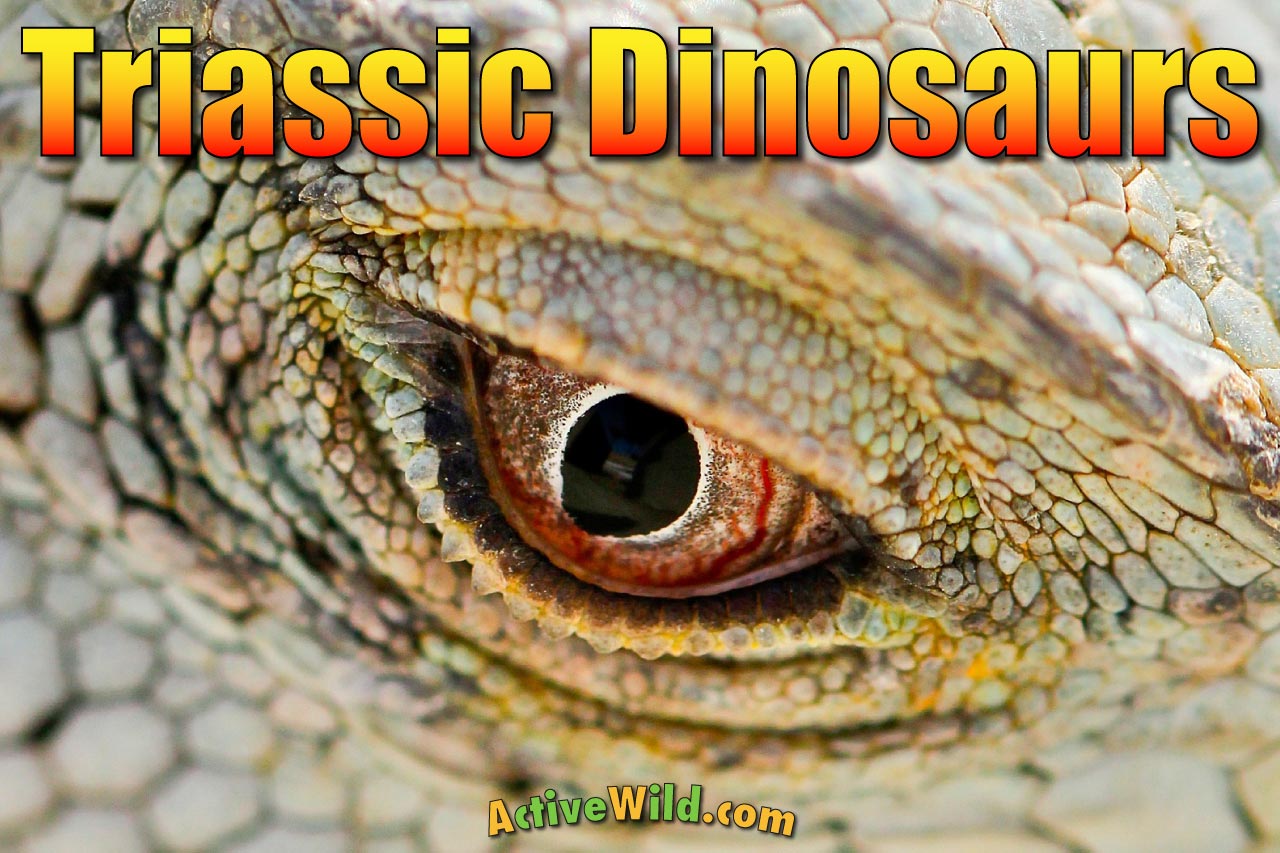

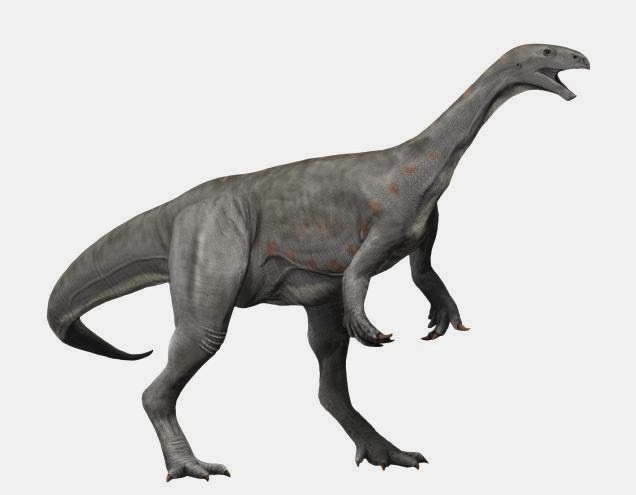




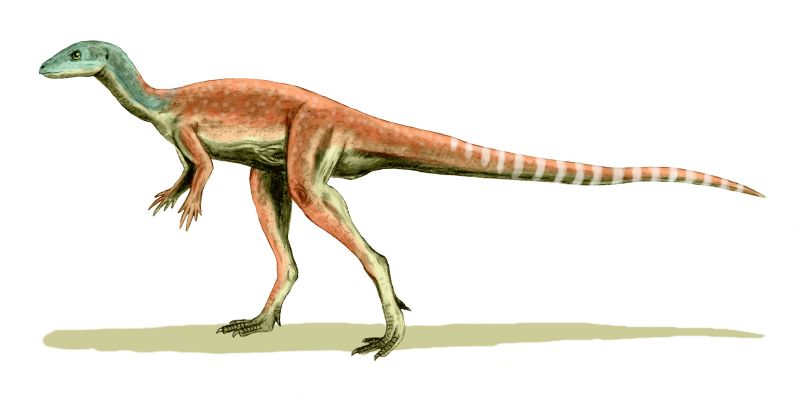

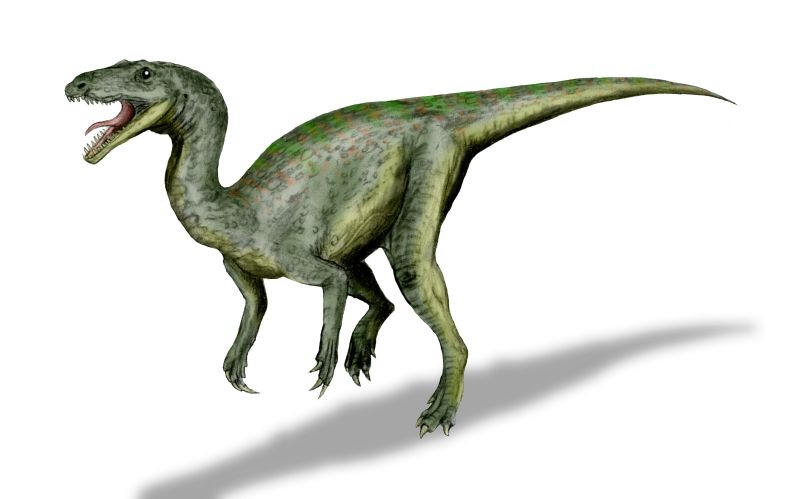


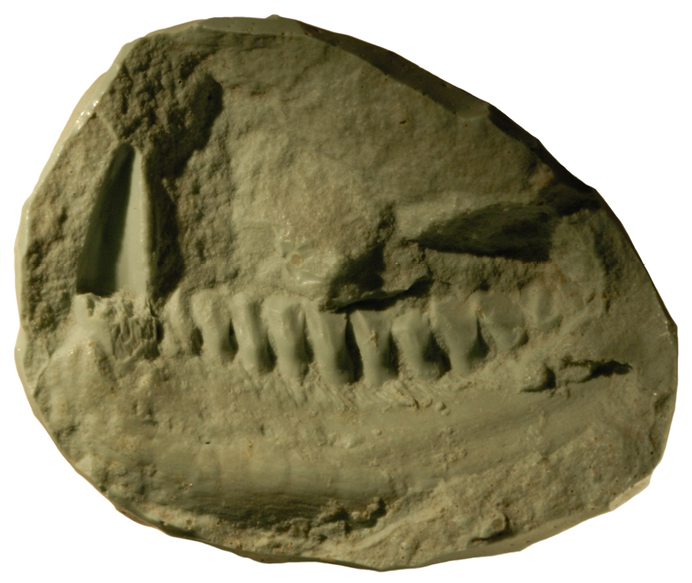


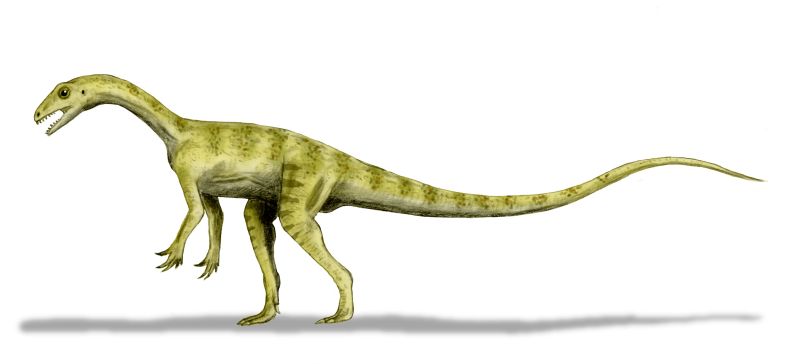



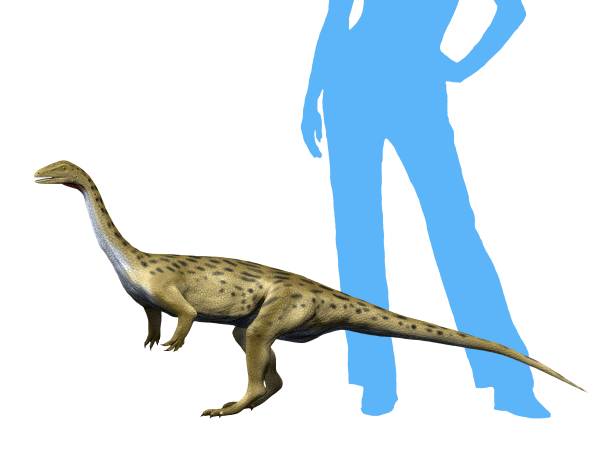
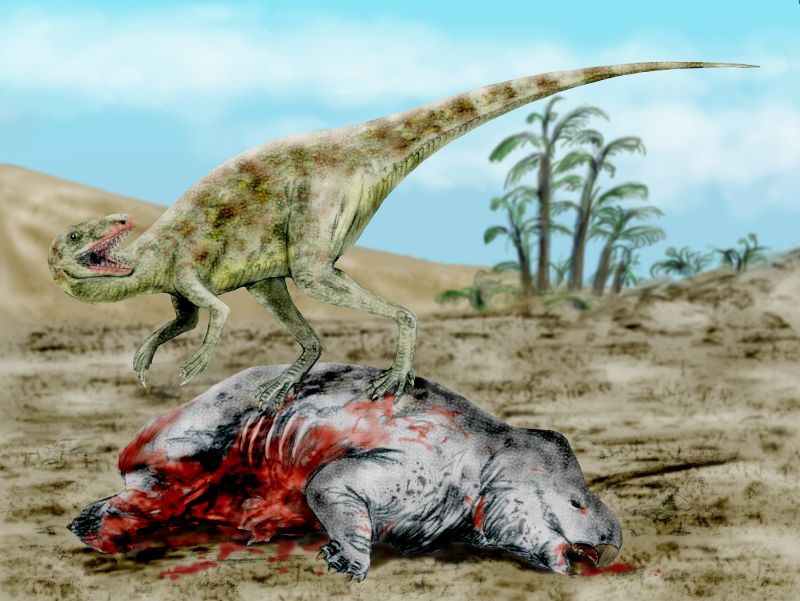


Hi there!
I am currently on the look out for all the animals that lived in coexistence during:
Early Triassic (Around 251 – 248 M.Y.A.)
Mid Triassic (Around 248-237 M.Y.A.)
Late Triassic (Around 237-201 M.Y.A.)
Could I get a list of at least 3-4 of the most prominent animals such as but not limited to early pterosaurs, synapsids, archosaurs, and dinosaurs? Asking for all this information because I am working on 3 art pieces with the goal to depict the early, mid, and late Triassic period as natural and accurate as possible. Thus, I require information about paleobotany, geography, and any other organisms (such as dinosaurs, synapsids, archosaurs, and pterosaurs).
Thank you so much!
Best Regards,
Odil
Hi, this article might help: Triassic Animals
Good luck with your project!
Regards,
The Active Wild Team
yes finally a reliable site to look at dinosaurs!
Best dino?
Where is a dinosaur with a bony head
Hi!
You can find several dinosaurs with bony heads on this page: Dinosaur Identification.
Regards,
The Active Wild Team
Is there a dino that has spikes going down its back and is a therapod?
Hi,
Great question!
Check out our guide to Dinosaur Identification!
Regards,
The Active Wild Team
I am trying to identify a fossilized skull. Can I email a photo?
Sounds very interesting, but you should probably get in touch with the paleontology department at your local university.
Do y’all have the saltopus on here?
Do you have a list of dinosaurs from Wales?
Hi Hayley,
Not yet, but it’s something we may do in the future.
Regards,
The Active Wild Team
I LOVE DINOS! <3 GO TRIASSIC PERIOD!!!
Hello I’m trying to find the name of a dinosaur that has long horn that starts at his forehead and protrudes maybe a foot of two long! He walks on all fours I think but when running he’s on his strong hind legs. He has a long tail! Researching this for my school age great grandson who has an addiction for dinosaurs! Thank you!
Hi Deborah,
We love questions like this!
We think it might be a parasaurolophus. (Although it had a crest, rather than a horn.)
Let us know if you’ve got any more clues!
Regards,
The Active Wild Team
Is there a pterodactyl on this site?
Hi, check out this page… Pterodactylus Facts.
It is actually a hadrosaurs
you guys forgot the odontochely it is a turtle like animal/dinosaur…
pls respond and put odontochely on the page. thanks! 🙂
Great suggestion! Odontochelys isn’t a dinosaur (it’s an early turtle), so it doesn’t belong on this page.
We have mentioned Odontochelys on these pages: Mesozoic Animals List and Triassic Period Facts, but it’s a very interesting animal, so we may cover it in more detail in the future!
Thank you for your message,
The Active Wild Team